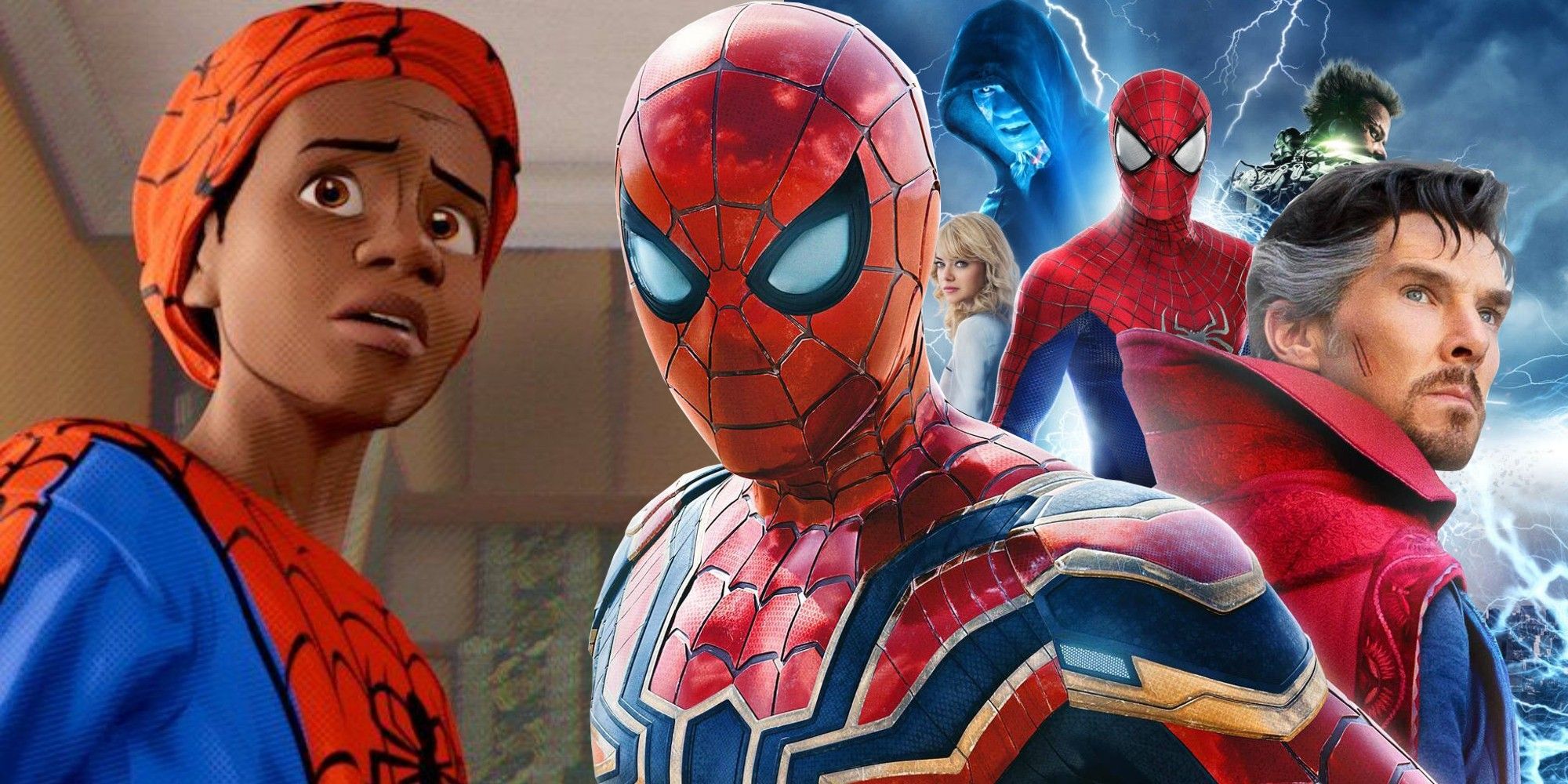
Spider-Man’s multiversal variants are atomically unstable in Spider-Man: Into the Spider-Verse, but the two Spider-Man iterations in Spider-Man: No Way Home experience no such dangers, prompting the question of why. Sony’s critically-acclaimed animated film brought Spider-Man iterations from different realities to the big screen for the first time in 2018 before the MCU united all three live-action versions of the web-slinger together in No Way Home. The reason why the two films depict such different effects of multiversal travel has to do with what brought the different Spider-Man variants together.
Miles Morales, who was bitten by a similar genetically-altered spider as Peter Parker, takes on the mantle of Spider-Man after witnessing the tragic death of the original web-slinger following a battle with Kingpin, who attempts to tap into the multiverse with a Super Collider. The machine brings numerous Spider-Man variants to Morales’ home reality, and each suffers from a condition nicknamed “glitching,” in which their atoms are excruciatingly unstable. The variants will eventually die unless they return to their native realities, adding an additional conflict for Miles Morales’ Spider-Man.
No Way Home brings Tobey Maguire and Andrew Garfield’s Spider-Man iterations and several of their respective villains into the MCU, but none of the characters experience the same atomic ailment as the variants in Into the Spider-Verse. This is likely due to the Kingpin’s Super-Collider affecting Spider-Man variants differently from Doctor Strange’s multiverse-altering spell, with the magic of the latter providing a far smoother transition between realities for the two Spider-Men and their enemies than the science of the former. Since there’s now a way for Spider-Man variants to travel between realities without risking an excruciating death, Miles Morales can reunite with Peter B. Parker and Spider-Gwen in Spider-Man: Across the Spider-Verse (Part One) without any danger of “glitching.”

Kingpin is desperate to see his wife and son again in Spider-Verse, commissioning the Super-Collider from Doctor Octopus and other scientists so that he can meet identical multiversal versions of his deceased family members. Although Doctor Octopus is one of her reality’s greatest scientific minds and more than capable of creating a more stable device, Kingpin’s tight deadline for her to finish the machine results in one that threatens both their reality and the lives of any multiversal being pulled into it. Fittingly, Peter B. Parker and the other Spider-Man variants will slowly disintegrate unless they go back to their home universes.
Doctor Strange, on the other hand, pulls six supervillains and two Spider-Man variants into the MCU due to a reality-altering spell that went awry when Peter Parker repeatedly tries to change its effects. As a highly-trained Master of the Mystic Arts, Doctor Strange’s magic, even when botched, is stable enough to bring characters into the MCU without putting them in danger of disintegration. Strange even has a simple method of sending everyone back, the Macchina di Kadavus, though its destruction via one of the Green Goblin’s pumpkin bombs nearly collapses the multiverse.
With Kingpin’s Super-Collider destroyed at the end of Into the Spider-Verse, it’s unclear how the multiversal Spider-Man characters will reunite in Spider-Man: Across the Spider-Verse. Presumably, something about the Super-Collider’s destruction changed the fabric of reality enough to send web-slingers to other realities without any danger of “glitching.” Or, Doctor Octopus and others may have learned from the mistakes of the first Super-Collider and corrected its instability. Similar to the multiversal traveling in Spider-Man: No Way Home, this would bring the Spider-Man iterations together again without the hazards shown in Spider-Man: Into the Spider-Verse.






























































